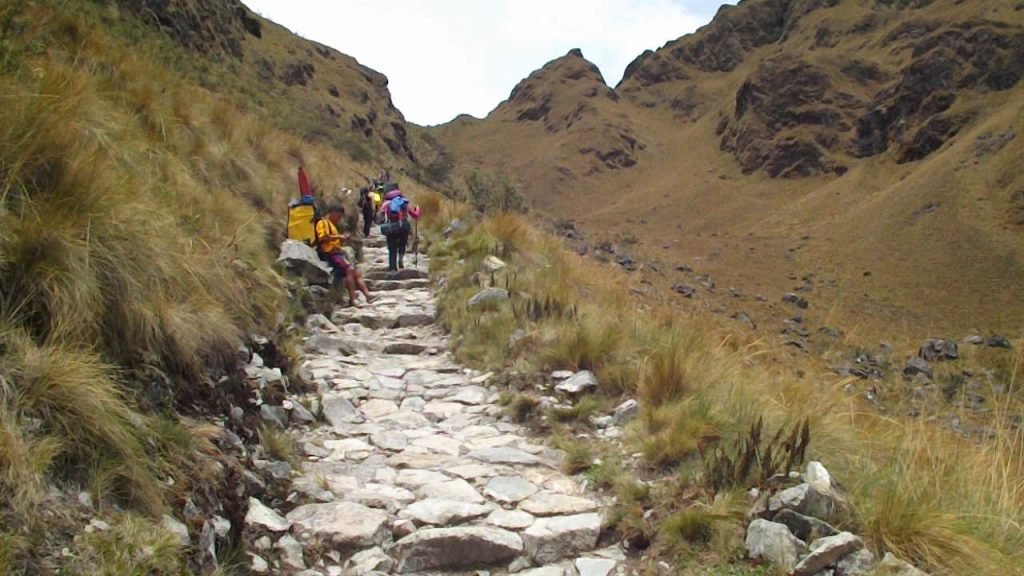The Dead Woman’s Pass: A Challenge and an Achievement on the Inca Trail
Throughout almost four days of hiking, the marvelous views and archaeological remains more than 500 years old that you will find along the Inca Trail will generate gratifying emotions that you will never experience again. Archaeological ruins, panoramic views and lush forests linked by a common stone path handmade more than 500 years ago by Inca inhabitants and now traveled by thousands of tourists a year are some of the attractions that make this route one of the top destinations for culture and trekking fanatics. Of all the remarkable elements of the Inca Trail, the best known is the Dead Woman’s Pass (“Warmiwañusca” in Quechua). This natural feature is so named because, seen from the valley, its ridges resemble the shape of a woman’s body in the supine position.

Hiking the Inca Trail is one of the most iconic travel experiences you can have in the city of Cusco and in South America. There are even many hiking enthusiasts who rank this route as one of the best short hiking trails in the world. Every year, thousands of hikers undertake the four-day journey that ends at the majestic Inca ruins of Machu Picchu, located 2,000 meters above sea level. It is a journey that tests the spirit and physical capacity of those who undertake it, but also rewards them handsomely with the experience they will take home.
Dead Woman’s Pass Trekking: A Rewarding Challenge on the Inca Trail
What makes the Dead Woman’s Pass so famous (or also considered by others to be infamous) is the high altitude at which it is located. At 4,215 m, it is the highest (and also the most feared) point on the Inca Trail, and almost 1,800 m higher than the actual altitude of the citadel of Machu Picchu. The pass occurs during the second day of the trek, which is often considered the most complex because of the distance and hours of hiking. As much of the day is spent at higher altitudes and with fewer trees, the terrain becomes rockier and more difficult to traverse, and hikers are more exposed to the day’s weather conditions, which can offer anything from cool rains to scorching sun or strong winds.
And yet, the factors that make the day more difficult than others are what make reaching the pass one of the most rewarding-probably the second most rewarding moments on the trail. It is at this mini summit that many first feel a real sense of accomplishment that materializes when they reach this point. They are undertaking something physically unusual, exciting and strenuous, and it serves as a great life moment for those who choose to be here. Sometimes, hikers celebrate their arrival with a quick drink of rum and a photo session with the valley in the background before continuing on their way.
Dead Woman’s Pass: a hiker’s achievement
Everyone who hikes the Inca Trail has their own favorite experiences and memories to take home. The Dead Woman’s Pass is a great accomplishment for hikers, but it is just one more on a route so full of special moments that it becomes difficult to pick a favorite. It is the embodiment of the importance of the journey, much more so than the destination.





